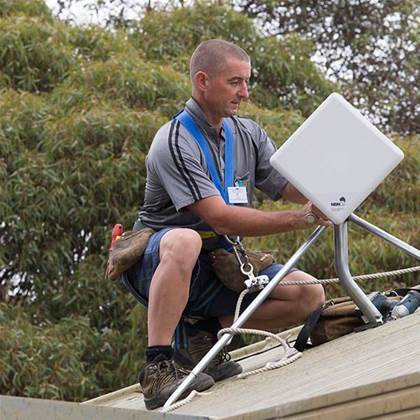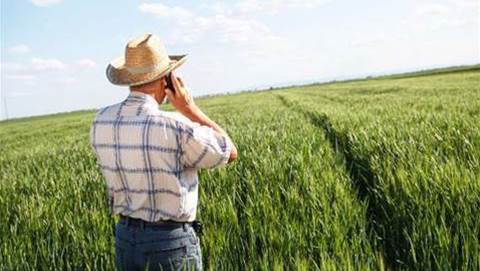NBN Co has performed upgrades on “the vast majority” of 238 backhaul links identified last month as experiencing unacceptable levels of packet loss.

The network builder released more details of the metric it uses to determine what is and isn’t acceptable packet loss on Thursday, and provided an update on how it is remediating problem links.
The company last month said about one in ten - or 238 - microwave and fibre transmission links connected to its fixed wireless towers suffered from unacceptable levels of packet loss.
The packet loss was a contributor to problems seen by customers on the fixed wireless network, yet it wasn’t reflected in publicly reported congestion numbers.
That changes this month with NBN Co adding the data as a new metric on its monthly progress report.
The first thing this does is define the problem: NBN Co considers a backhaul link in need of upgrade if it experiences a “28 day busy hour link packet loss” of over 0.25 percent.
It’s not clear how many lost packets that is in actual terms.
It’s also worth noting that the data for April - the first reporting month - is incomplete and that an “averaging methodology” has been applied to stretch it across an entire month’s reporting period.
Actual data used in the report spans April 18 to May 1. NBN Co had data on the problem earlier - it revealed numbers before a Senate committee on April 9 - but it appears to have changed the way it reports the numbers mid-month.
That is understood to have led to the lack of a consistent figure representing the entire month of April.
“In April we changed how we were reporting these figures to provide more meaningful information to RSPs [retail service providers] as part of our weekly RSP reporting,” an NBN Co spokesperson told iTnews.
“In order to align what we’re reporting to RSPs and publicly on the progress report, we decided to publish the April report with data from 18 April to 1 May inclusive.”
Retailers now receive information about cells connected to the impacted backhaul links as well as a list of “associated upcoming upgrades”.
This information is important as the Australian Competition and Consumer Commission (ACCC) has put more of an onus on RSPs to be able to tell prospective fixed wireless users upfront if a new connection is likely to be congested.
However, the part-month of numbers for April and the “averaging methodology” means there is some uncertainty embedded in the this first metric release.
NBN Co said that “88.5 percent of NBN fixed wireless cells connect via backhaul links with a 28 day busy hour link packet loss of less than 0.25 percent” - or, in other words, 11.5 percent of cells are served by backhaul links dropping too many packets.
iTnews has confirmed the number of backhaul links being talked about here is 117.
That means NBN Co managed to remediate the excess packet drops for about 49 percent of the 238 links it said were impacted in total.
Chief network engineering officer Peter Ryan had suggested that remediating the full 238 links was likely to occur “by the end of April or early May”.
When asked by iTnews, an NBN Co spokesperson said that as of May 23, “the vast majority have had upgrades performed on them.”
NBN Co suggested that its reported numbers for April could have been inflated by already-upgraded links that were “still reporting an average 28 day busy hour link packet loss of 0.25 percent or more because of the averaging methodology used.”
NBN Co also cautioned that its metric did not reflect end-to-end packet loss on fixed wireless - simply losses caused over a single link.
“Each NBN-supplied fixed wireless service may rely on multiple backhaul links in sequence,” the company said.
“This metric does not reflect any cumulative packet loss across multiple links.
“This metric measures the microwave and fibre links which connect fixed wireless towers and may not include all packet loss which may occur through other equipment in the NBN wireless network or fibre links in the nbn transit network that data may be routed across.”
Update, May 25:
NBN Co has provided additional information on its progress upgrading the links.
As at this week, it says, "approximately 80 percent (190) of the 238 links identified at the time of Senate estimates have been upgraded and brought within the 0.25 percent performance threshold. This leaves approximately 48 of those 238 links still in the pool to be upgraded."
It said that more links had been added to the number needing upgrades.
That means "there are a total of 106 links performing outside the threshold and therefore in the pool to be upgraded, including the 48 mentioned above."
"This is a 28-day rolling average as of this week. In May we will publish a 28-day average covering the 28-days until the final Wednesday of the month," an NBN spokesperson said.
"It is important to note that the total number of links to be upgraded will continue to fluctuate as increasing demand on the network contributes to additional backhaul links falling outside the threshold. We expect the metric to improve over time.
"We also perform upgrades on links that we forecast will soon fall outside the threshold."
NBN Co disputes the 49 percent progress figure for April as reported by iTnews. It declined to provide a different number.




















